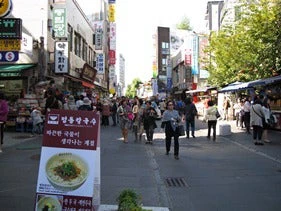
In light of this challenge, the World Bank has recently initiated a flagship program on urbanization in South Asia. A critical part of this program is the formation of a network of policymakers and practitioners designed to put the world’s best knowledge and data in their hands, to harness urban growth for faster poverty alleviation and better development outcomes. In October 2012, the program, in collaboration with the Korea Research Institute for Human Settlement, hosted its first workshop in Daegu, South Korea. The workshop connected practitioners and government officials from Bangladesh, Bhutan, the Maldives, Nepal, Pakistan, and Sri Lanka with each other and with international expertise.
On the first day of the workshop, the participants exchanged views on the key urbanization challenges faced by their countries. Despite important differences between the countries, the participants shared the view that urbanization and urban development are yet to receive the concerted policy attention they urgently require in their countries. In this context, South Asian cities need to be more functional to reap the benefits from agglomeration and global integration, so that they become dynamic growth escalators and engines of poverty reduction.
The workshop quickly became a forum for peer learning, with practitioners exchanging ideas on how best to promote mutual learning, raise awareness of the challenges posed by rapid urbanization and sustain knowledge sharing. A variety of models for the network of practitioners were put forward, for example a three-tier approach consisting of a leadership group, specialist group, and citizen group. Creating linkages between cities with similar characteristics across countries were emphasized. "Big" solutions from governments should be balanced with "small" ones championed by communities and NGOs, they said.
Several participants raised concerns over the fragmentation of urban planning. "Sectoral departments are often working in isolation. There is a lack of coordination. Resources are spread thin. Spatial, economic and social planning should be integrated," said Sunil Kumar Karn of the Ministry of Urban Development, Nepal. His point was echoed by Aminath Athifa of the Ministry of Housing and Infrastructure, Maldives. Although higher urban density leads to higher productivity, it may also come with social costs such as alienation, fragmentation of communities, and higher crime rates, she said, suggesting that “social reach-out programs” also be included in a holistic approach. Hossain Zillur Rahman of the Power and Participation Research Center, Bangladesh, concluded, "We need to attain a new kind of capacity. Urban management is much more than just financial management and physical planning."


Join the Conversation